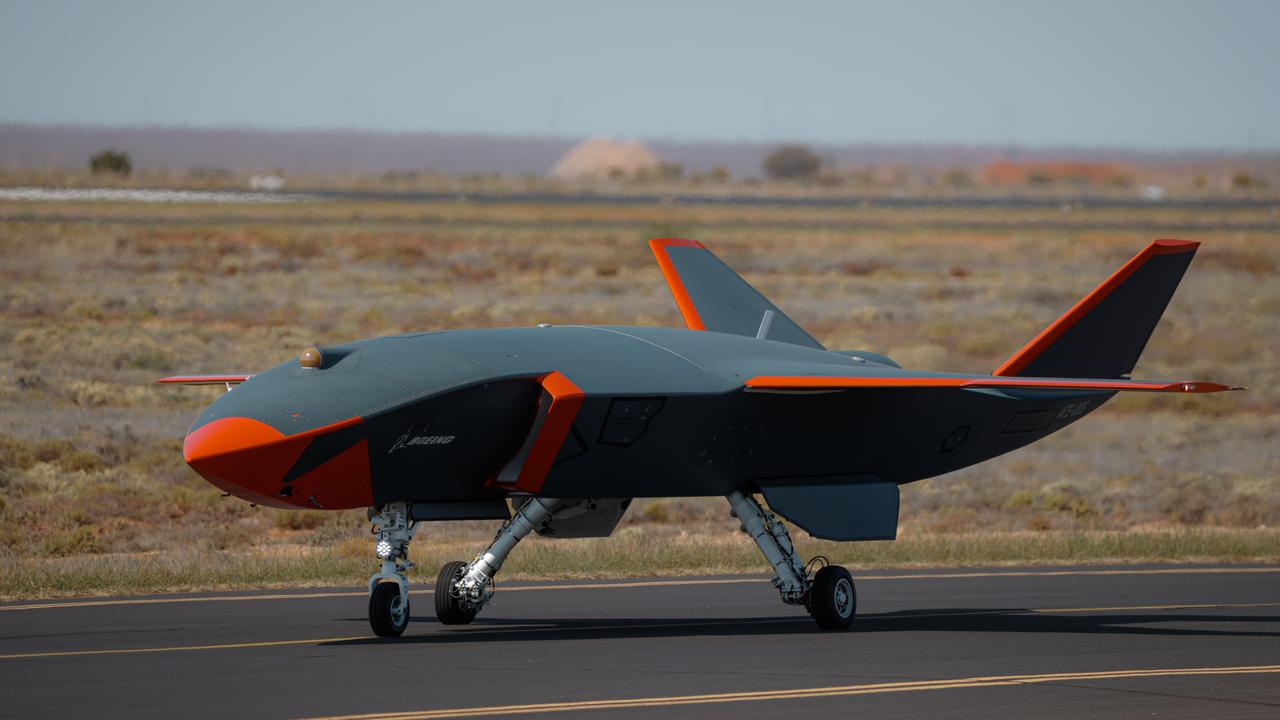Ambitious target for Wedgetail paid off
The Wedgetail E-7A has surprised many by performing seamlessly with half as many crew as an E-3 and a much smaller airframe.

In September 2014, a RAAF E-7A Wedgetail early warning and control aircraft arrived in the Middle East to join the war against the Islamic State terror group.
Soon after its crew set off on a familiarisation flight, they were told a US E-3 Sentry aircraft that was to direct operations over Iraq was unserviceable and were asked to take over the operation.
Number 2 Squadron commander Warren Haynes says the crew had been extensively prepared for the mission in simulators and in exercises, and it was quickly assessed that their workup training made this complex operation safe for them. The crew transitioned seamlessly from a “famil” exercise to an operation, Wing Commander Haynes says.
RAAF chief Air Marshal Robert Chipman says the Wedgetail joined Australia’s Air Task Group as a battle space manager with tasks including directing fighter aircraft and linking them up with tankers – “orchestrating the fight, bringing it all together”.
Chipman says the aircraft surprised many by performing seamlessly with how the E-3s operated, using the same tactics, techniques and procedures, with a radar able to see a long way and to build a very good picture, and with a strong communication suite. Suddenly there was an E-7 on the block with half as many crew as an E-3 and a much smaller airframe. “It was a lot more reliable than the E-3s and was doing at least as good a job.”
It wasn’t always so. The Wedgetail was an early addition to the public version of the Defence projects of concern list in January 2008 and it remained there until December 2012.
Chipman says the Wedgetail, built into a Boeing 737 airframe, was an Australian idea, built to Australian specifications to meet an Australian requirement.
Boeing and Northrop Grumman in the US fitted the radar and the UK’s BAE Systems the electronic-warfare system.
He says the project was for a long time very troubled and benefited from the additional oversight as a project of concern.
“An element of pragmatism crept in once we realised that some of the capability requirements we set were aspirational, that this was leading-edge technology,” Chipman says.
“We needed to work with the manufacturer and evolve it iteratively. We were able to bring it into service at a time when the operators could still influence the capability. That’s been the secret sauce – you have people who know the system well, to operate it to its top potential and work closely with the manufacturers to deliver that.”
The Wedgetail was highly developmental and the phased array radar, the heart of the surveillance capability, had never previously been integrated into an airborne system at that scale.
The Australian National Audit Office (ANAO) warned that delays in some projects, including the Wedgetail, resulted from their technical difficulty leading to “underestimation by industry and/or Defence of the complexity of developmental and/or large-scale integration projects.”
The ANAO said the Wedgetail achieved final operational capability in May 2015, but noted that it had “provided more than 1220 hours directing air strikes in the coalition operations in the Middle East since October 2014”.
Chris Deeble, who now heads Defence’s Capability Acquisition and Sustainment Group, joined the project in 2006. He says the aircraft was conceived as a mobile element of the command and control role that had previously been done from the ground.
What finally emerged was vastly more than that.
“It’s a critical aggregator and disseminator of information, taking information in, adding its own sensor and other information and pushing that out to the fighter force. It’s an enabler now for fifth generation war fighting,” Deeble says.
He says such complex projects are necessary and the Wedgetail experience demonstrates that they can succeed.
“It’s about being aware, understanding the risks and the benefits, and charting the path that helps avoid significant problems you will inevitably find as you take on complex technology,” he continues. “People didn’t understand what being the lead customer for our first of type capability was going to mean for us. The specification was very demanding as I discovered when I took over the program.”
A very aggressive schedule was never going to be achieved. An example was the early approach to testing the radar.
“When we got the radar operating on the aircraft, the temptation was to check its performance at full power, its range, its loading and its maximum performance. That was very important to understanding if we’ll get there,” Deeble explains.
But when they went to full power on the immature radar it failed, he says. “It was not stable, so we had to accept that path was not going to work and reverted to a lower power.”
Ultimately the integrated radar and communications systems fitted within two side arrays and a “top hat” on the fuselage could “see” over a vast area.
So, what does Wedgetail’s ultimate success signal about Australia’s ability to develop cutting edge technology and get it operational?
“It tells us that it’s not cheap,” Chipman says.
“It’s not easy, it doesn’t happen quickly. You need to persist with it, but you also need to get to a point where you’ve got a good enough product to push it out into the operational community and evolve it over time.
“That combination of working in partnership, having the vision, persistence and determination to see a capability through, but also to evolve it while it’s in service are valuable lessons. That’s our pathway. There are other ways to deliver cutting edge technology to the war fighter, and we need to be open to all of them.”
Chipman says some original goals may have been over optimistic, but setting them helped develop a significant capability. “Had we not set ambitious targets we would’ve fallen short of what was eventually achieved. You have to strive for ambitious targets.”
But there is a balance point. “We also need to achieve the timely delivery of capability into service. We were close to a point with Wedgetail where our determination to achieve an ambitious target was delaying its introduction, and that’s dead time for us. If a product is good enough, then we bring it into service and achieve those aspirational objectives over time.”
How difficult is it to evolve a capability once it’s operational?
That’s the new model, says Chipman. The RAAF has a steady drumbeat refreshing the capabilities of platforms such as the F-35A Lightning II, the Growler electronic attack aircraft and the Super Hornet by upgrading software, hardware, and firmware.
“That ensures that we’re on the leading edge of technology. We must do that because our potential adversaries are not standing still. They’re delivering new missiles and other capabilities into inventory, new electronic warfare systems. You’ve got this cat and mouse game where we need to continue to make sure our systems can compete and win.”
-
Brendan Nicholson edits the Australian Strategic Policy Institute site, The Strategist.



